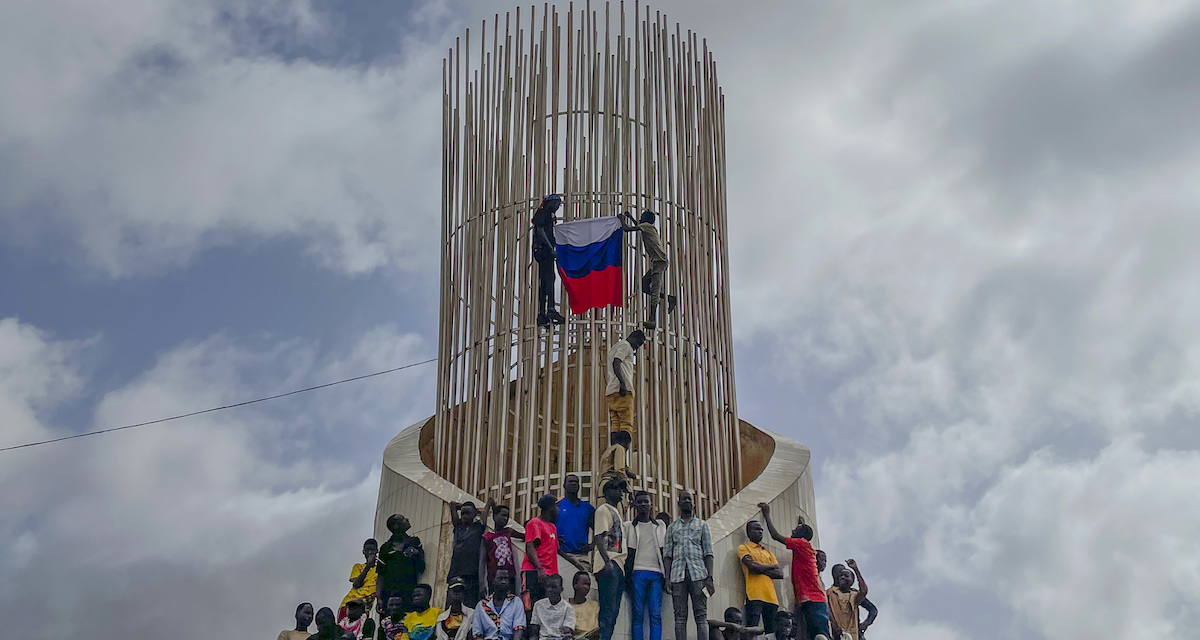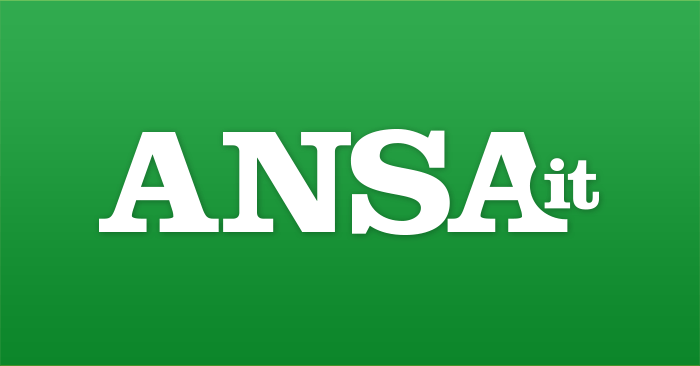Junta supporters carry the Russian flag during a demonstration in Niamey, Niger, August 3 (AP Photo/Sam Mednick)
It is present everywhere, especially in anti-French demonstrations, and has become a fashionable object among the population
At the end of July, Niger’s army ousted President Mohamed Bazoum, completing the coup: General Omar Chiani declared himself the country’s leader, with the support of part of the population. Pro-junta demonstrations from the first days were driven by strong anti-French sentiment. In contrast to France, the former colonial power that still has important interests and influence in the region, many Russian flags appeared among the demonstrators.
Russian flags quickly became a symbol of protest and Niger’s new direction. Many young people in West Africa view Russia as an anti-colonial force, capable of helping their countries free themselves from ties with Western countries and shape a different future, which does not necessarily have to be democratic. Years of corruption, state dysfunction, and economic problems have undermined confidence in democracy for many people in the region, and in Niger in particular. The attraction to the “strong man” is very present among the local population, and Russia and its President Vladimir Putin are considered a role model.
Nigerians carry the flags of Russia and Niger during a protest against France in Niamey, Niger, August 11 (AP Photo/Sam Mednick)
Junta supporters carry the Russian flag during a demonstration in Niamey, Niger, July 27 (AP Photo/Sam Mednick)
The opening to Russia was also supported by the ongoing work of disinformation on social networks carried out by organizations and people linked to the Russian government. Likewise, some of the many Russian flags are believed to have been distributed by Russia itself. Ahmed Bello, President of the Nigerian PARADE Association Created by the Russian Ministry of Foreign AffairsHe said to The New York Times The distribution of flags is made possible thanks to Russian funding.
Russian flag has become so desirable and fashionable among young people that internal production has also been born. the Nigerien tailors sew frequently White, blue and red flags, which sell for $6: a T-shirt in the same colors can cost $3, and a car sticker (a tool widely used especially by taxi drivers) costs 80 cents.
A tailor sews a Russian flag in Niamey, Niger, August 24. (AP Photo/Sam Mednick)
Junta supporters raise Russian flags during a demonstration near the French air base in Niamey, Niger, August 27 (EPA/ISSIFOU DJIBO/ansa)
The first Russian flags appeared in West Africa on construction sites for the construction of some roads funded by the Russian state. Thus, they quickly became a symbol of efficiency and a state capable of solving problems. Flags were also present on weapons imported from Russia and on the uniforms of mercenaries, especially the Wagner group. The latter’s influence and Russian propaganda in the region are considered worrying, and ousted President Bazoum himself denounced the risks.
Junta supporters raise Russian flags during a demonstration against the French military presence in Niger, in Niamey, August 25 (EPA/ISSIFOU DJIBO/ansa)
Junta supporters wave Russian flags during a demonstration in Niamey, Niger, August 26 (EPA/ISSIFOU DJIBO/ansa)
The flag and its colors in Niger have also become a “fashionable” thing and a symbol of protest. Kyle Walter, principal investigator at Logical facts“The Russian flag has become a symbol of resistance, and at the same time anti-Western and anti-French tendencies,” says a company that studies disinformation campaigns.
A junta supporter carries a Russian flag during a demonstration in Niamey, Niger, July 27 (AP Photo/Sam Mednick)
Junta supporters carry the Russian flag during a demonstration in Niamey, Niger, July 27 (AP Photo/Sam Mednick)
– Read also: What is the country of Niger?

“Reader. Travel maven. Student. Passionate tv junkie. Internet ninja. Twitter advocate. Web nerd. Bacon buff.”




